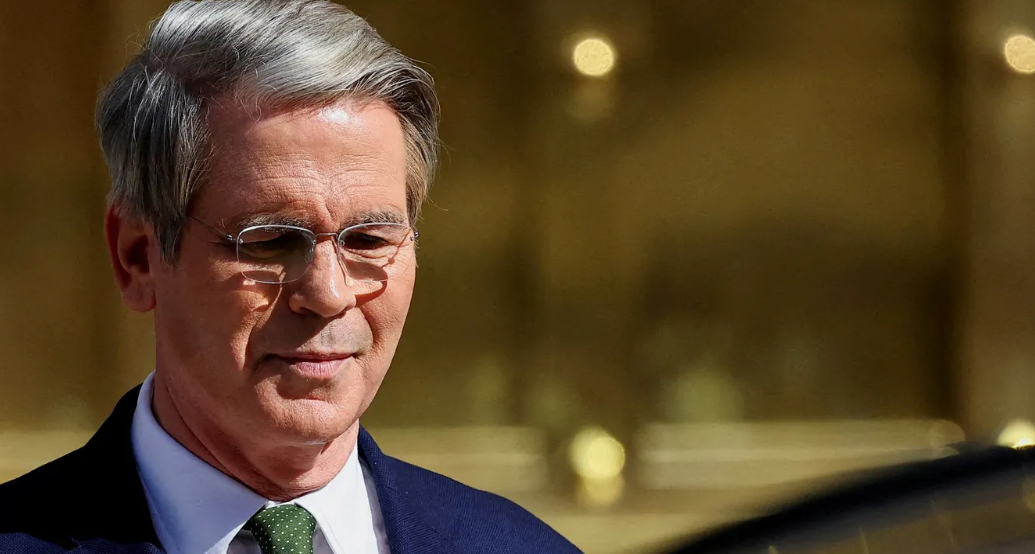
الاخبار


اخبار الساحة الاسلامية

أخبار العتبة العلوية المقدسة

أخبار العتبة الحسينية المقدسة

أخبار العتبة الكاظمية المقدسة

أخبار العتبة العسكرية المقدسة

أخبار العتبة العباسية المقدسة

أخبار العلوم و التكنولوجيا

الاخبار الصحية

الاخبار الاقتصادية
وزير خزانة أميركا يتوقع خفض الفائدة قبل نهاية الربع الثالث
المصدر:
skynewsarabia.com
 02:16 صباحاً
02:16 صباحاً
2025-07-02
30

توقع وزير الخزانة الأميركي، سكوت بيسنت، الثلاثاء، أن يُقدم مجلس الاحتياطي الفيدرالي على خفض أسعار الفائدة "بحلول سبتمبر"، في ضوء تقييم الإدارة الأميركية بأن الرسوم الجمركية الأخيرة لم تؤدِ إلى ارتفاع التضخم.
وجاءت تصريحاته خلال مقابلة مع قناة فوكس نيوز، وسط ضغوط متزايدة من الرئيس دونالد ترامب لدفع البنك المركزي نحو تسهيل السياسة النقدية.
وأضاف بيسنت: "أعتقد أن المعيار هو أن الرسوم الجمركية لم تكن تضخمية. إذا كانوا سيتبعون هذا المعيار، أعتقد أنهم قد يفعلون ذلك في وقت أقرب من ذلك، ولكن بالتأكيد بحلول سبتمبر أيلول".
ترامب يضغط… والفيدرالي يلتزم الحذر
الرئيس ترامب كرر مراراً في الأسابيع الماضية دعواته لخفض أسعار الفائدة، معتبراً أن المستوى الحالي للفائدة – الذي يتراوح بين 4.25 و4.50 بالمئة – يعوق النمو ويحدّ من فرص تعزيز الاستثمار.
وتأتي هذه المطالبات بالتزامن مع استمرار تطبيق تعريفات جمركية على واردات من الصين والمكسيك والاتحاد الأوروبي، ضمن ما تصفه الإدارة الأميركية بـ"إستراتيجية إعادة التوازن التجاري".
لكن مجلس الاحتياطي الفيدرالي، بقيادة جيروم باول، لم يلمح حتى الآن إلى تغيير وشيك في السياسة النقدية.
وفي اجتماعه الأخير في يونيو، أبقى الفيدرالي على أسعار الفائدة دون تغيير، مع تأكيده على الحاجة إلى المزيد من البيانات لضمان تراجع مستدام للتضخم نحو هدفه البالغ 2 بالمئة سنوياً.
بيانات التضخم
بحسب تقرير التضخم الصادر عن وزارة العمل الأميركية في يونيو، تباطأ التضخم الأساسي إلى 2.6 بالمئة على أساس سنوي، وهو أدنى مستوى منذ مطلع 2021.
كما أظهرت بيانات الإنفاق الاستهلاكي الشخصي (PCE) – المؤشر المفضل للفيدرالي – تباطؤاً واضحاً، ما دفع بعض الاقتصاديين إلى توقع خفض للفائدة في الربع الثالث إذا استمرت هذه الاتجاهات.
في الوقت نفسه، أشارت أحدث توقعات الفيدرالي إلى احتمال خفض واحد للفائدة هذا العام، دون تحديد توقيت محدد، ما يجعل تصريحات بيسنت محط أنظار الأسواق والمراقبين.
الأسواق تترقب والإدارة تمهد الطريق
يُنظر إلى تصريحات وزير الخزانة كجزء من تمهيد سياسي لتحفيز الفيدرالي على التحرك، خصوصاً في ظل رغبة البيت الأبيض في دفع الاقتصاد نحو مزيد من التوسع قبل الانتخابات النصفية.
ومن جانبهم، يتابع المستثمرون عن كثب بيانات التوظيف والتضخم خلال يوليو وأغسطس، لتقييم مدى التزام الفيدرالي بمسار التيسير النقدي الذي بدأت الأسواق تسعّره تدريجياً.












 (نوافذ).. إصدار أدبي يوثق القصص الفائزة في مسابقة الإمام العسكري (عليه السلام)
(نوافذ).. إصدار أدبي يوثق القصص الفائزة في مسابقة الإمام العسكري (عليه السلام) قسم الشؤون الفكرية يصدر مجموعة قصصية بعنوان (قلوب بلا مأوى)
قسم الشؤون الفكرية يصدر مجموعة قصصية بعنوان (قلوب بلا مأوى) قسم الشؤون الفكرية يصدر مجموعة قصصية بعنوان (قلوب بلا مأوى)
قسم الشؤون الفكرية يصدر مجموعة قصصية بعنوان (قلوب بلا مأوى)

















